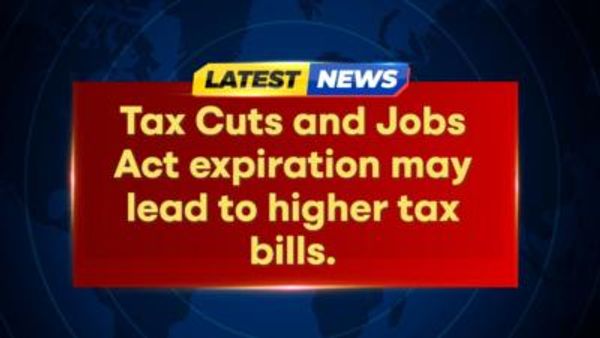The dreaded Tax Day deadline is creeping closer. But it isn't too late to make moves before April 15 so you pay less tax. Now's also the time to map out a plan to make sure you pay the IRS not a penny more than needed for the 2024 tax year.
You still have time to make moves that will lower your tax bill in the current tax-filing season. To be sure, many tax-friendly breaks the IRS gives you — think deductions for charitable giving, 401(k) contributions, property taxes paid and home interest expenses — require you to make the moves during the calendar year. So, if you didn't write a check to your favorite charity or max out your employer-retirement account or make an extra mortgage payment by Dec. 31, 2023, you won't be able to benefit for taxes you'll file between now and the mid-April filing deadline.
"That being said, there are a few things that you can do between now and Tax Day to lower your taxes," said Mark Steber, chief tax information officer at Jackson Hewitt tax service.
Here are 11th-hour moves you can make to lower your tax burden.
Fund IRAs Before April 15 To Pay Less Tax
Unlike 401(k)s, you're able to fund IRAs up until the April 15 tax deadline. "It's an excellent tax deduction tool," said Steber.
The contribution limit for 2023 is $6,500 and $7,500 for those 50 and older. If funding your IRA fully proves challenging, Steber offers this tip: If you are due a refund, file your taxes early and use the refund to contribute to your IRA for the next tax year. "Have the government sponsor a little bit of your IRA contribution with a bigger refund check thanks to the bigger deduction you get from (maxing out your IRA)."
Maxing out your traditional IRA has a twofold benefit, says Rob Burnette, investment advisor and tax preparer at Outlook Financial Center. Making a traditional IRA contribution allows you to reduce your gross income dollar for dollar if you and your spouse aren't covered by a retirement plan at work. "It lowers your tax bill," said Burnette. You're also saving money that can help boost your odds of a secure retirement, he adds.
Of course, if you fund a Roth IRA with post-tax income it won't lower your tax bill this filing season, but will reduce your taxes in the future, adds Burnette.
Small business owners, freelancers and independent contractors also have until April 15 to fund a so-called SEP-IRA. This retirement plan has larger contribution limits. In 2023, you can contribute the lesser of 25% of your compensation or $66,000, according to the IRS.
"The SEP-IRA is much more generous than a regular IRA," said Lisa Greene-Lewis, CPA and TurboTax tax expert.
You'll have to check with your CPA or tax preparer to see what your net profit is for the year and resulting maximum SEP-IRA contribution allowed, says Burnette. Tax software can also calculate your SEP-IRA contribution, too.
Don't Overlook Possible Deductions
If you're itemizing deductions on this season's return, now's the time to comb through receipts for money paid to charities. You should also locate receipts that enable you to take advantage of tax credits for things like environmentally friendly home improvements or the purchase of a qualifying new clean electric vehicle.
The reason: You don't want to miss possible deductions or tax credits that you're entitled to.
"There are actually a couple of things that (taxpayers) typically miss," said Burnette. "So, think back: Did you do anything to the house, such as install new energy-efficient windows or doors, that entitles you to green-friendly tax credits?"
It's also a good idea now to look back at 2023 for any "significant life changes" that could impact your tax bill, adds Jackson Hewitt's Steber. "Did you start a side hustle or start trading crypto currencies?" said Steber. "If you did, talk to your tax professional about what those changes might mean."
It also makes sense to start your tax preparation process sooner rather than later so that you can flag any forgotten items that might be material to your tax return, Steber adds.
There are also steps you can take now to prepare for the 2024 tax year.
Keep Better Records And Pay Less Tax
We're just two months into the new year, but don't wait too long to set up a tax document storage system that will track all your financial moves with tax implications for the 2024 tax year, says Steber. "Taxes are no longer just a one-day event," said Steber. "It's a year-round event."
And that's especially true when it comes to tax-related record keeping. It's easier to plan a tax strategy for the upcoming year if you take care of the administrative stuff.
That means keeping track of investment trades with capital gains implications. You should also tally green- and tax-friendly home improvements, expense receipts for your small business and any financial transactions that require receipts, such as deductions related to charities or health care expenses.
Set up a folder or a spreadsheet now to make sure you're organized when next year's tax-filing season rolls around.
Pay Less Tax: Do A Midyear Tax Checkup
To get a better sense of how your tax liability is tracking this year, do a dry-run of sorts around the 4th of July.
"See where you currently stand and plan and manage accordingly," said Steber. "Doing a midyear checkup is an absolutely central part of doing your taxes these days." And that's especially true if there is earnings volatility in your financial life.
If you're a W-2 employee, for example, review your June 30 paystub. Multiply your year-to-date income and withholding by two and then do a preliminary tax return to see if you're on track for a refund or will owe the IRS.
Armed with this intelligence, you can be proactive and make any needed adjustments to your withholding amounts. If it looks like your tax bill is bigger than you originally estimated, you have time to make adjustments to lower your tax burden, such as contributing more to your 401(k) or making an extra mortgage or property tax payment before year-end to boost your deductions.
"Look at accelerating your deductions and taking advantage of tax credits," said Burnette. "If you need a deduction or tax credit (to lower your IRS bill), and you were thinking about replacing windows, or toying with the idea of putting up solar panels on your roof or buying an electric car, you might want to consider looking into it or going ahead with it," said Burnette.
Factor In New Income Streams Such As Side Gigs
And if you have a side hustle as well, which gives you two incomes not one, you have time to make any necessary adjustments to "avoid surprises" at tax time a year from now.
Don't forget to factor in the income you earn on those 1099s, which don't include tax deductions. And, if necessary, talk to your tax preparer now to see if it's prudent to pay quarterly taxes starting in 2024.
"It's more common (than in the past) for households to have two earnings streams," said Steber. "Many people have side hustles and trade cryptocurrencies. And that means there's more income that you have to account for and plan for. You want to be able to manage any (payment) shock and avoid any underpayment penalties."
And one more thing: Use your 2023 tax return as a learning tool, says Greene-Lewis.
"This year's tax outcome lets you know what to expect next year," said Greene-Lewis. And it's better to make fixes now than at midnight on April 15, 2025, when you file your tax forms for tax year 2024.










